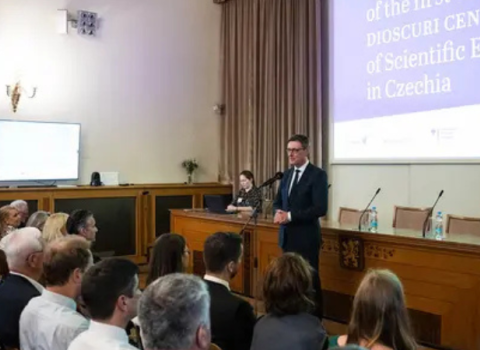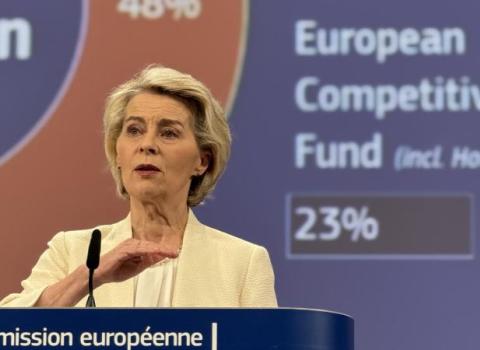
Nuala Moran, Managing Editor, Science|Business
Surely, that other – broader – principle of promoting cohesion by distributing resources according to need, should take precedence. Let the EU’s research budgets furnish countries where the scientific institutes and research universities need help to emerge from an impoverished past, is a frequent plea.
Now comes the first manifestation of how the ERC’s commitment to funding excellence will play out. The first ERC grants were handed out not much more than two years ago, but in the past month this funding (and other Framework Programme grants), was behind two significant breakthroughs – in quantum computing and proteomics – that have put Europe ahead of the game in two areas of basic research with immense commercial potential.
In the case of quantum computing, Jeremy O’Brien of the Centre for Quantum Photonics at Bristol University in the UK announced the development of a chip that unites quantum physics with conventional silicon-based electronics. Where other researchers are experimenting in extreme environments in a bid to capitalise on the ability of subatomic particles to be in more than one place at a time – O’Brien and collaborators in Twente University in the Netherlands, Tohuku University, Japan, and Israel’s Weizmann Institute, have designed a chip that uses photons rather than copper wires to transmit and manipulate data.
Research on the quantum chip has received funding from a number of public and industrial funders including Nokia, the UK Engineering and Physical Sciences Research Council, the EU’s Future and Emerging Technologies (FET) programme, along with the ERC.
The second breakthrough, by Ruedi Aebersold and colleagues at ETH Zurich, working in collaboration with the Institute of Systems Biology in Seattle, concerns a major advance in the mapping of all human proteins. Aerbersold has provided a mass spectrometry fingerprint of all 20,300 proteins that are directly coded for by genes. Many of these were known and characterised already of course. What Aebersold’s work does is provide a standard reference for identifying and quantifying them all.
Armed with these standardised fingerprints - which are being made freely-available - scientists now have the map to guide further basic research and to develop applications. It will, for example, be easier to validate and standardise biomarkers for use in drug discovery and development and as companion diagnostics.
This also sets up the base camp for exploring and codifying the many thousands of protein variants generated by changes that occur after the original protein is produced.
Aebersold’s work, which attracted an ERC Advanced Grant in Proteomics, of €2.4 million over five years, has already formed the basis of a spin-out company, Biognosys – an immediate commercial return from an area of basic research.
Fascinating and valuable research, but where do these two important advances leave those institutions that are not equipped to attract big-name scientists and big grants? Excellence and cohesion become opposing forces and either/ors. You can’t have one if you fund the other.
The European Research Area Board (ERAB) has been insistent that the two must be reconciled in its plans for the single European Research Area, an objective that is made harder by the fact that part of brief is to avoid duplication of national research infrastructures and funding programmes, in order to build economies of scale and get more value from R&D budgets.
The key is to find a way to turn this tension between excellence and cohesion to Europe’s advantage. Excellence must become the guiding principle to ensure cohesion occurs. This means setting out criteria and providing benchmarks for excellence that any country or region can follow, and ensuring that the fruits of EU-funded research can cascade out.
Above all the commitment to excellence must be held on behalf of the EU as a whole - as an instrument to improve things for everyone, not as a stick to beat those who are already at a disadvantage.
In that way, as the commercial and economic potential of the ERC-funded advances in quantum computing, proteomics and other fields is realised, excellence and cohesion can be made to fit on one side of the (research funding) coin.





 A unique international forum for public research organisations and companies to connect their external engagement with strategic interests around their R&D system.
A unique international forum for public research organisations and companies to connect their external engagement with strategic interests around their R&D system.